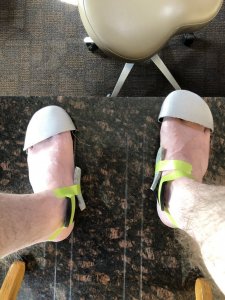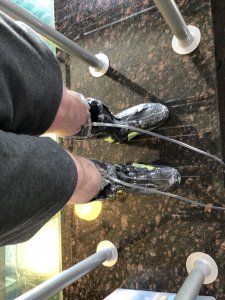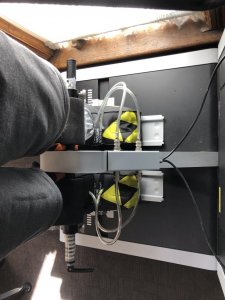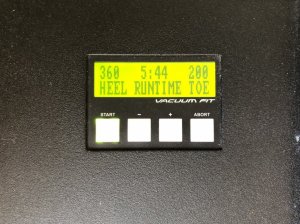I picked up a pair of the Fischer RC4 Curv 130 Vacuum boots. I already have Head Raptor B2 RD, B3 RD, and Overkill shells, but I had my reasons:
Coming away from all this info, I still have a bunch of questions:
Note that my fit in these new boots is very "forgiving" - I really don't have any hot spots and what I generally need is more of a reduction in width (these shells are 97mm and my others are quite a bit narrower). I have an extra pair of ZipFit WC liners that I'm planning on using with the boots. The ZipFit makes the boot more "substantial" and I also replaced the stock strap with an expert model Booster.
- They were ridiculously cheap
- They have shell material that isn’t as greatly impacted by temps (keeps the flex more consistent)
- I wanted a softer flexing boot for deep snow days
- They are much more upright (stated 12* forward lean, haven’t measured them yet)
- They’re much lighter than any of my head boots
- They have GripWalk replaceable soles available
Coming away from all this info, I still have a bunch of questions:
- How can you identify the newest version of the Vacuum stand machine?
- What's the difference between the different generations of the Vacuum stand?
- How much pressure do I really want them to set the machine to?
- Dual zone compression sleeves, use 360 rear / 200 front (max pressure is 360?)
- How much time should they heat the shells (10 mins. @ 80* C)
- What should the buckle tension level be when forming?
- Why do they use the cooling pads? It seems to take a long time from pulling the boots from the oven until the pads and the compression bags are fully installed and inflated.
Note that my fit in these new boots is very "forgiving" - I really don't have any hot spots and what I generally need is more of a reduction in width (these shells are 97mm and my others are quite a bit narrower). I have an extra pair of ZipFit WC liners that I'm planning on using with the boots. The ZipFit makes the boot more "substantial" and I also replaced the stock strap with an expert model Booster.













